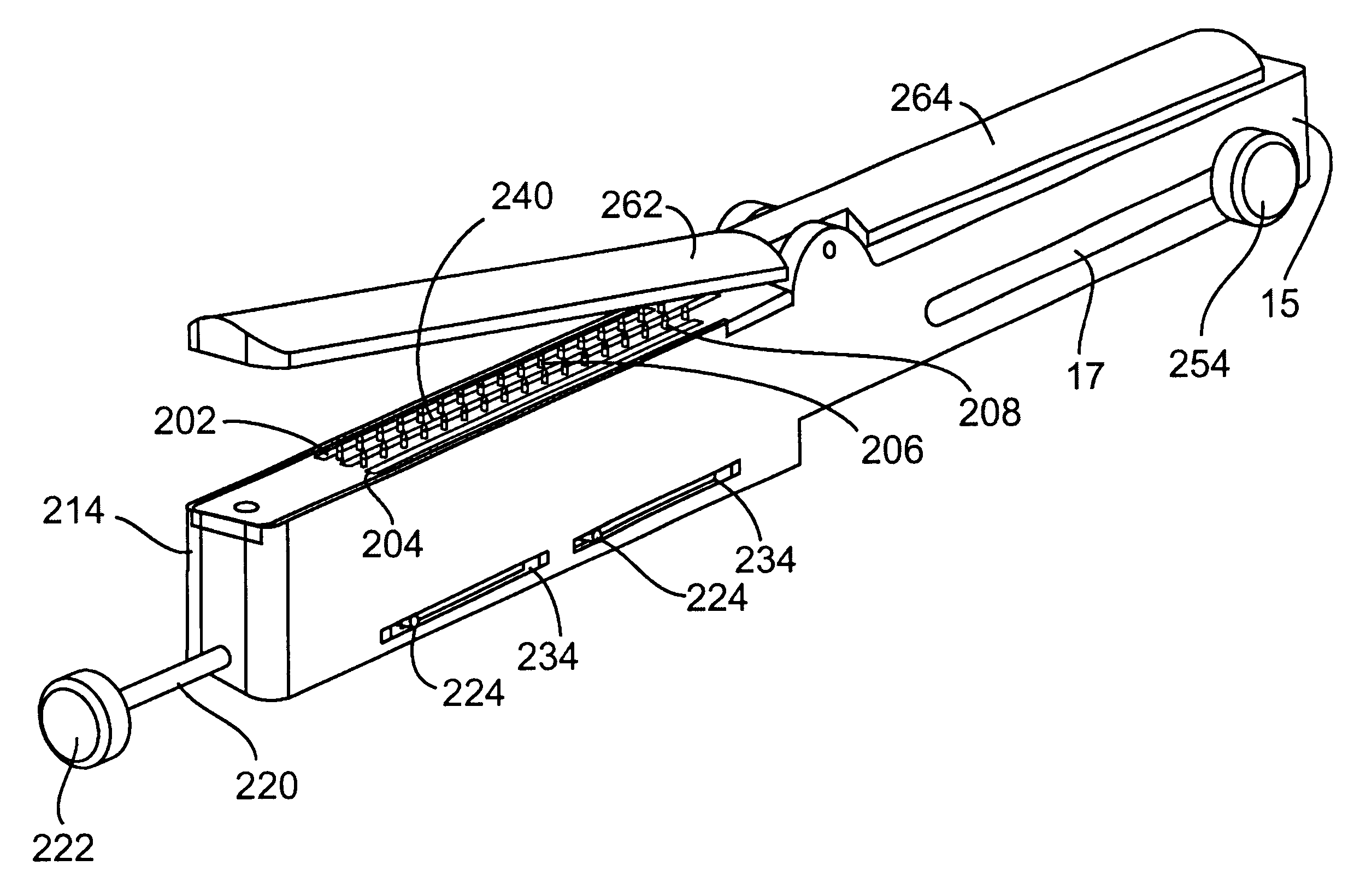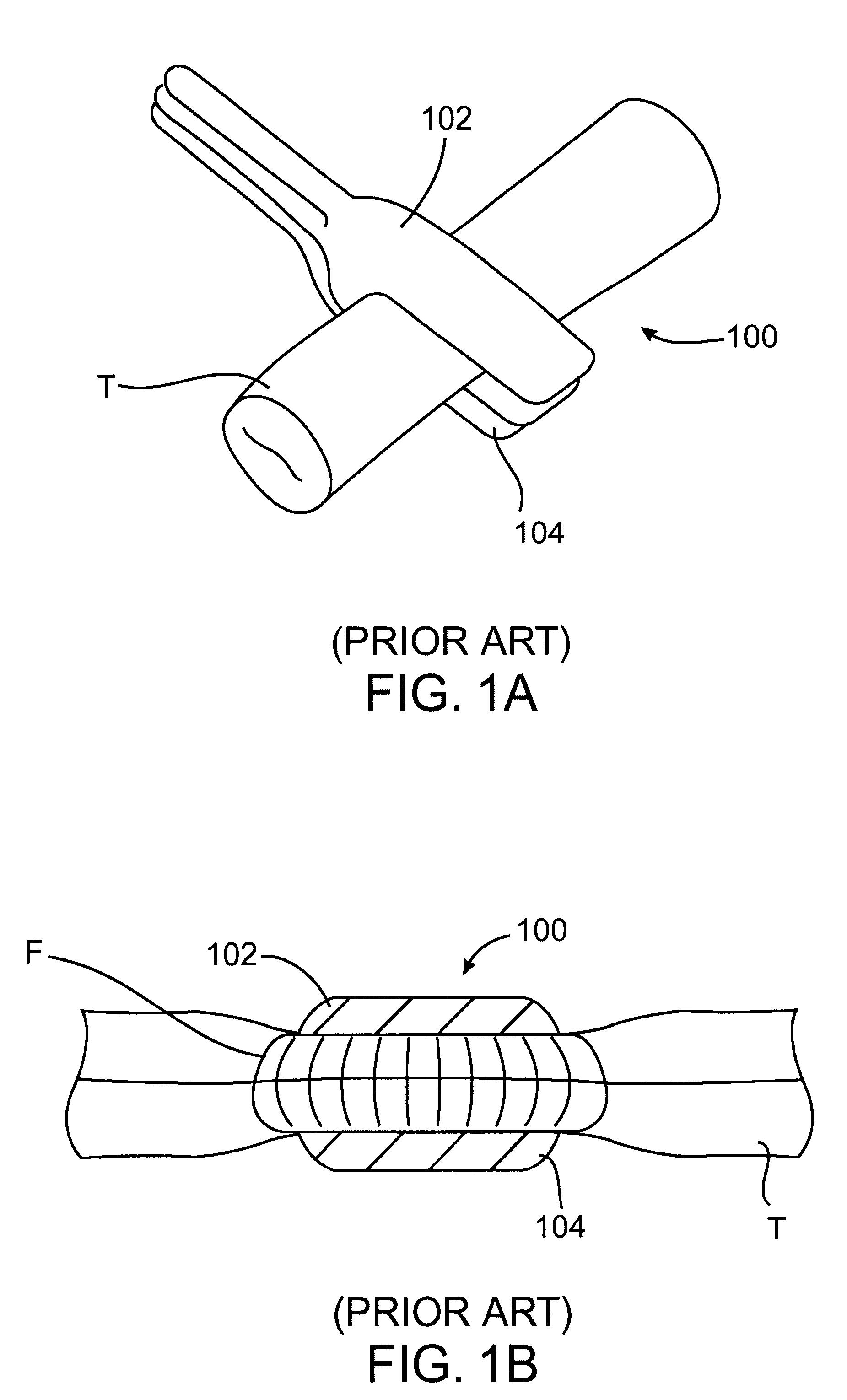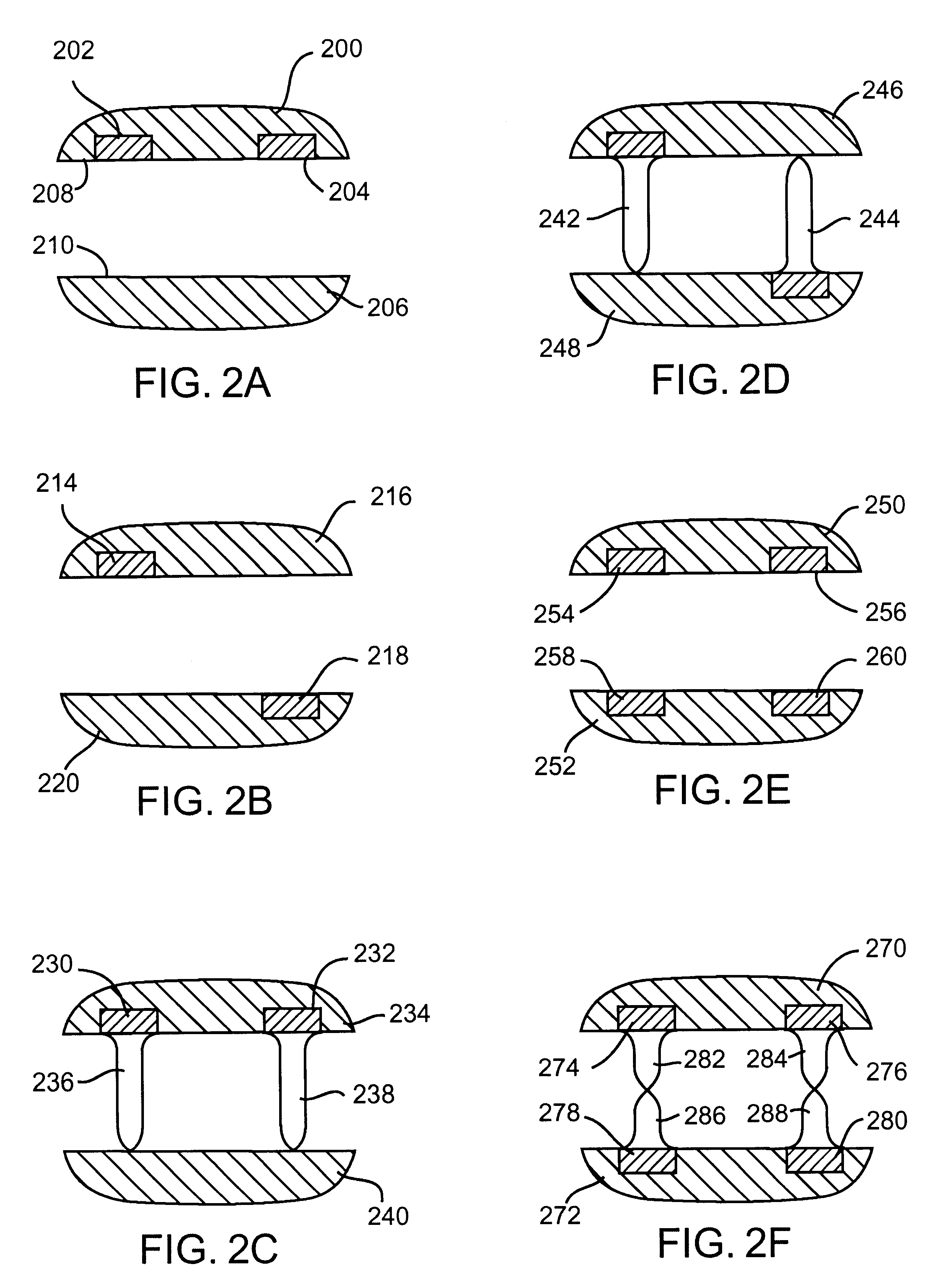Bipolar surgical instruments having focused electrical fields
a surgical instrument and focused technology, applied in the field of medical devices and methods, can solve the problems of reducing the ability of the first and second jaws to effectively deliver high frequency electrical energy to the tissue, reducing surface resistance and impedance, and reducing the grasping force applied to the tissu
- Summary
- Abstract
- Description
- Claims
- Application Information
AI Technical Summary
Benefits of technology
Problems solved by technology
Method used
Image
Examples
Embodiment Construction
According to the present invention, bipolar surgical instruments will include at least two and up to four or more laterally spaced-apart electrode members disposed on a pair of actuable jaws. By properly positioning the electrode members relative to each other, radiofrequency energy applied to tissue disposed between the jaws can be focused within a well-defined region between the electrode members. In contrast to prior art devices and methods, where electrodes of opposite polarity are generally engaged against directly opposed tissue surfaces, the present invention will position at least one positive electrode and at least one negative electrode on and / or into laterally spaced-apart sites on opposed tissue surfaces.
The electrode members may be configured in a wide variety of patterns and designs, some of which are illustrated in FIGS. 2A-2E. Most simply, one jaw 200 may carry a first electrode member 202 which is laterally spaced-apart from a second electrode member 204, where the ...
PUM
 Login to View More
Login to View More Abstract
Description
Claims
Application Information
 Login to View More
Login to View More - R&D
- Intellectual Property
- Life Sciences
- Materials
- Tech Scout
- Unparalleled Data Quality
- Higher Quality Content
- 60% Fewer Hallucinations
Browse by: Latest US Patents, China's latest patents, Technical Efficacy Thesaurus, Application Domain, Technology Topic, Popular Technical Reports.
© 2025 PatSnap. All rights reserved.Legal|Privacy policy|Modern Slavery Act Transparency Statement|Sitemap|About US| Contact US: help@patsnap.com



